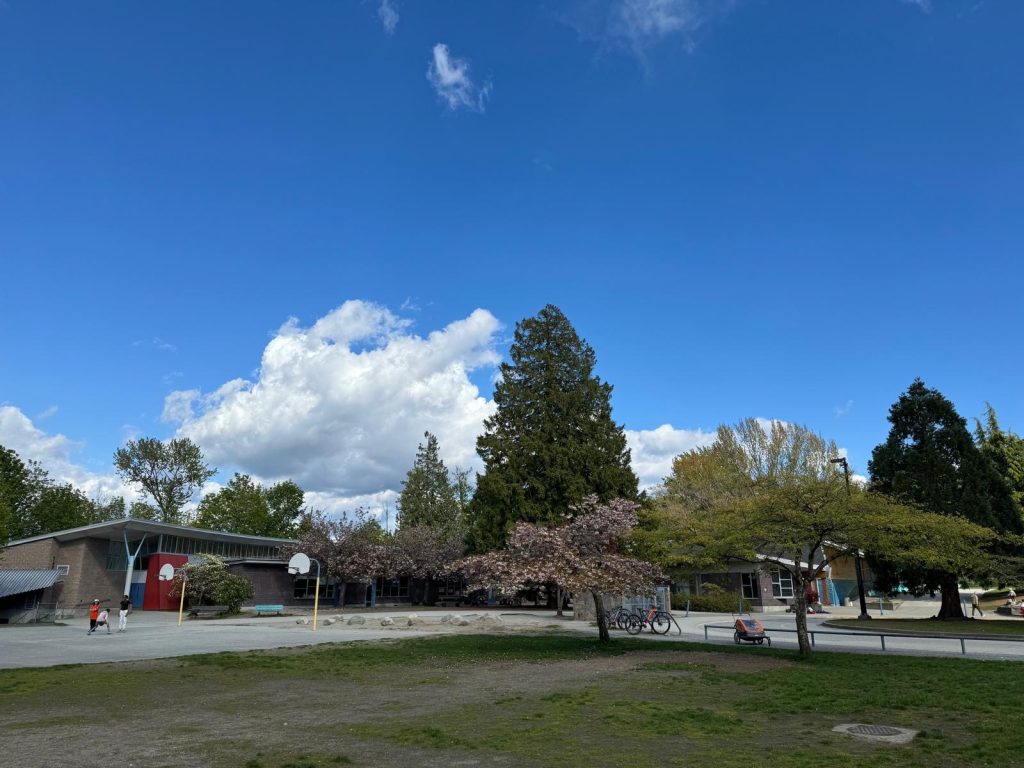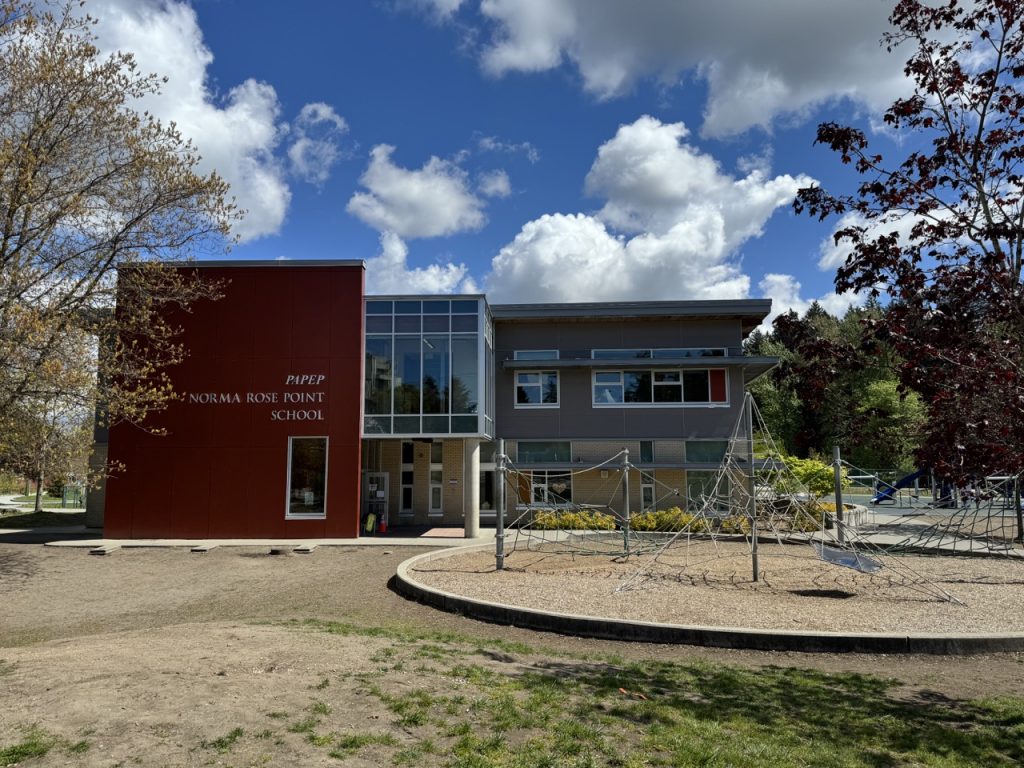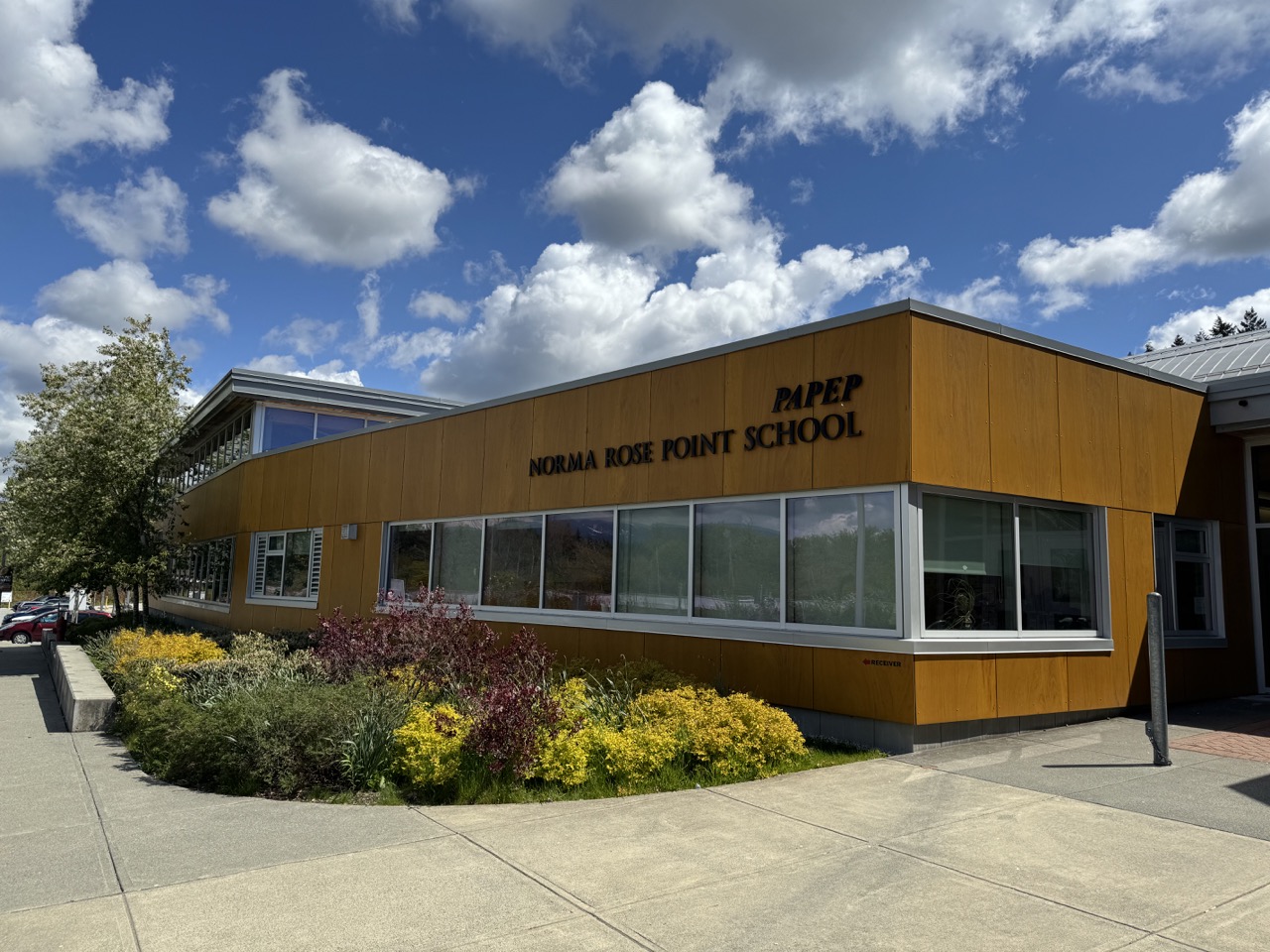Parents in the UBC neighbourhoods and the endowment lands are increasingly frustrated at overcrowding in the two elementary schools on the peninsula, Norma Rose Point and University Hill.
“The elementary schools are both full and sending kids away,” says Jen McCutcheon, a parent with a daughter at UHill elementary and a son who previously attended the school.
“Norma Point Rose is absolutely full and every single year turns kids away at almost every grade level,” says McCutcheon. “UHill Elementary is also full at most grades.” McCutcheon was on UHill’s parent advisory committee for six years and is also the elected Metro Vancouver director for so-called Area A, which includes UBC neighbourhoods and the endowment lands.
Capacity pressures at the two schools aren’t new.
When McCutcheon and her family moved to the Hawthorn neighbourhood, part of the catchment for Norma Rose Point, school officials told them not to even bother putting their son on the waitlist, so both children attended UHill elementary.

A few years ago, McCutcheon recalls, a child whose parents tried to enrol her in kindergarten at UHill was turned away because there was no room. “The family had just arrived from Egypt, and they had to get the child to Carnarvon school, about 6 km off campus, every day, rain shine, snow.” Carnarvon is on 16th Ave. east of Blenheim.
When Fei Liu and her family moved to the area in May 2018, she called Norma Rose Point to enrol their son, who was then in Grade 3. The school said there was no room. “They just said, Oh, we have a long wait list. You’d better try to find another school nearby.” The family persevered and eventually got their son enrolled.
But in the fall of 2018, when their young daughter was old enough to go to kindergarten, there was no room at Norma Rose Point. Their daughter ended up at UHill for a week until there was an opening.
Public schools for residents of the UBC lands and the University Endowment Lands are run by the Vancouver School Board (VSB). That’s the case even though the UBC neighbourhoods and the endowment lands are not part of the City of Vancouver.
While the school board acknowledges there is “enrolment pressure” felt especially at the two elementary schools, its numbers paint a different—and much criticized—picture.
The VSB’s projections show that for both elementary schools, enrolment is poised to actually drop to 1,100 in 2032 from the current tally of 1,155 students.
“That’s ridiculous,” McCutcheon says of the projections. “They make no sense given both the UEL leləṁ development and of course all of the development within the university neighbourhoods.”
UBC is asking the province to approve a land use plan that would see the campus neighbourhoods more than double in population by 2050. In addition, the leləṁ neighbourhood development on the endowment lands will add at least 2,500 residents, which doesn’t include a recent application by the developer to add an additional 622 housing units to the existing plan.
“If you build houses,” says Steve Cardwell, the former superintendent and CEO of the VSB, “then you need schools for the people who live in them.” Cardwell is now the chair of the Institute for Public Education BC.
Norma Rose Point now has 740 students, just short of its capacity of 792. By 2032, enrollment is expected to climb further and the board says it will be over-capacity with 824 students .

But the board estimates that enrolment at UHill elementary will decline, dropping to 276 by 2032. The current enrolment of 415 students is over its capacity of 370.
In all, the board is projecting a fall in enrolment by 2032 of 64 students—25 fewer elementary students and 39 fewer secondary students. It’s not clear how these numbers are calculated, or if they take into account the increase in housing capacity.
Michael Hooper is an associate professor of community and regional planning at UBC. He says the VSB’s planning numbers are based on assumptions that don’t make sense.
“My God, I’ve never seen anything, anything, like the VSB’s planning.” The formulas used to arrive at the projections are secret, he says.
Hooper is not alone. VSB trustee Suzie Mah also questions how the board gets its numbers.
“Maybe we’re not taking into account these announcements that are being announced every other day about densification in Vancouver.”
It’s not just on the UBC lands that the board’s projections raise questions. The Ministry of Education and Child Care estimates that schools in the Vancouver School District will see roughly 2,300 more students by the 2033–2034 school year.
The school board is predicting population decline in Vancouver, not growth. Under its enrolment projection, the elementary and secondary student population would drop by 4,184 students between 2023 and 2032.
That’s a difference of almost 6,500 students between the province’s estimate and the board’s estimate.
While the board says enrolment in peninsula schools will decline, it also says this: “Forecasts indicate there will be additional enrolment pressure in the area in coming years; however rapid enrolment growth is not anticipated.” The board says it is revising its enrolment estimates with new numbers that are expected to be posted by the end of June.
Hooper, who studied into the board’s forecasts in an unsuccessful fight over the closure of the Queen Elizabeth Annex French immersion school, says he’s not surprised the board can say—at the same time—that enrolment will decline while enrolment pressure will go up.
At a board meeting he attended about a year ago, one of the first discussions was about asking the province for funding for portables because, as a senior staff member said, Vancouver schools were overcrowded. Later in the meeting, the same official said schools were empty and the board needed to sell schools.
Mah, who represents the Coalition of Progressive Electors and has become an outspoken critic of the board, says Hooper’s experience is nothing new. “It’s like a moving target. One day we are told there’s going to be a decrease, then the next day we’re told they’re going to be an increase.”
Temporary solutions
Overcrowded schools don’t necessarily mean that students are sitting in hallways, and the board says it has several ways of managing schools that have reached their limit.
As Jen McCutcheon and Fei Liu have described, overcrowding can mean waitlists or finding another school, not always one nearby. It can also mean split grades, with two grades of students sharing a classroom. But McCutcheon says the last-minute adjustments needed in September to arrange the splits can mean a week or two before kids can get settled.
There are no portables at the peninsula’s schools and no intention to add them. The board says they are expensive to maintain, and parents don’t like them.
McCutcheon says she understands that the board avoids portables because their presence increases pressure to build new schools.
To deal with the problem, the board told directors of the University Neighbourhoods Association at a meeting a year ago that, according to one source, it balances enrolment between the high-growth UBC neighbourhoods and slower-growth neighbourhoods in Vancouver proper by having students living in the UBC catchments go to schools down the hill.
The board admits this is the policy. “There is significant available space at schools near UBC/UEL (Queen Mary, Queen Elizabeth, Southlands, Kitchener and Bayview) to accommodate elementary students who are not able to be enrolled in their catchment school (Norma Rose Point Elementary and University Hill Elementary).
“As such, there are no portables in the UBC/UEL area because there is sufficient space at nearby schools to accommodate students.”
Flawed modelling?
Part of the problem with the board’s projections, Hooper says, is that they count only those residential developments where construction has started. “Only projects that are currently breaking ground can be included in the numbers. … Their model by design precludes most future growth.”
WARREN CARAGATA IS A JOURNALIST, EDITORIAL CONSULTANT AND MEMBER OF THE CAMPUS RESIDENT NEWSPAPER EDITORIAL COMMITTEE.
